Physical Address
304 North Cardinal St.
Dorchester Center, MA 02124
The female reproductive organs are protected by their location in the pelvis, making injuries uncommon, except during pregnancy or situations in which they are pathologically enlarged. Gynecologic trauma includes a large variety of relatively rare and challenging injuries from blunt and penetrating mechanisms. Pelvic fractures, straddle injuries, accidental penetration, and sudden forced stretching of the perineum are the most common types of injury that often result in trauma to perineum, vagina, and less commonly the cervix and uterus. Injuries to the external genitalia are frequently associated with interpersonal violence and should be treated in that context. Iatrogenic and pregnancy- or delivery-related gynecologic injuries are not discussed in this chapter.
Although injuries to the female genitalia are uncommon in the nonpregnant patient, they are more often seen in cases in which there is pathologic enlargement of the internal genitalia or in the early postpartum period. Missed or improperly treated female genital injuries can result in significant hemorrhage, sepsis, and loss of endocrine and reproductive function.
The perineal region can be divided into anterior and posterior triangles by a line between the ischial tuberosities and anterior to the anus ( Fig. 1 ). The anterior or urogenital triangle contains the vulva and include the labia majora, labia minora, the body and glans of the clitoris, and the vaginal and urethral orifices. The posterior or anal triangle contains the anal canal and the ischiorectal fossa, which in turn contains the internal pudendal arteries. Posteriorly, the levator ani and coccygeus muscles form the pelvic diaphragm, while the deep transverse perineal muscle and the sphincter muscle of the membranous urethra form the urogenital diaphragm, extending across the anterior portion of the pelvic outlet.
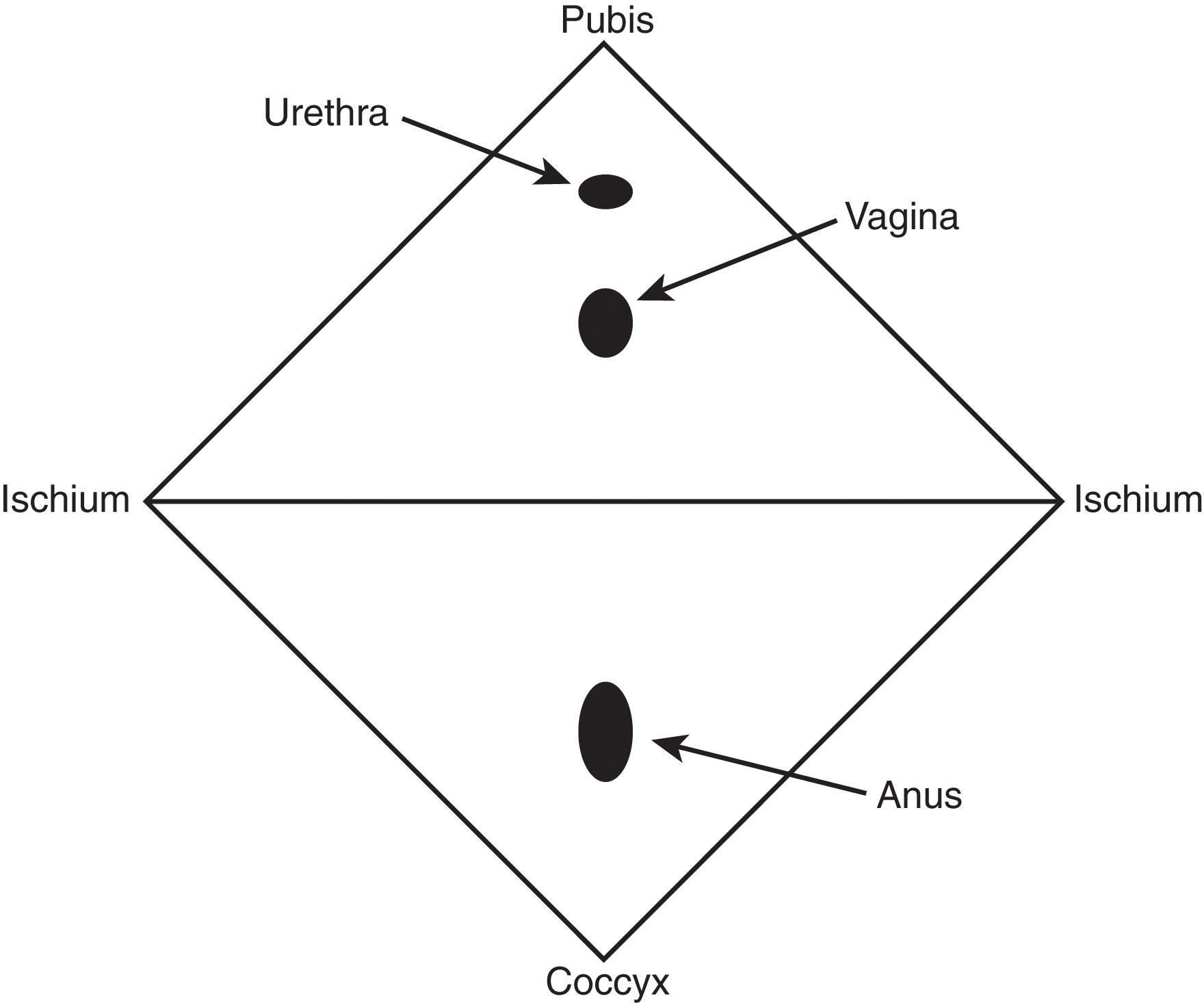
The upper female organs, the uterus and cervix, vagina, fallopian tubes, and ovaries, are located deeper in the pelvis ( Fig. 2 ). The muscular uterus is surrounded by the fallopian tubes, round ligaments, and the ovarian and uterine vessels, which arise from the internal iliac arteries. The fallopian tubes are divided into the following anatomic segments: interstitial, short isthmus, long ampulla and infundibulum, ending in the fimbriae. The cervix ends in the vagina, which in turn passes through the urogenital diaphragm and ends in the perineum. Lastly, the vagina is related to the bladder and ureters anteriorly and to the rectum posteriorly. The pelvis is a region rich in arterial vessels ( Figs. 3–5 ), as well as profuse venous drainage ( Fig. 6 ).
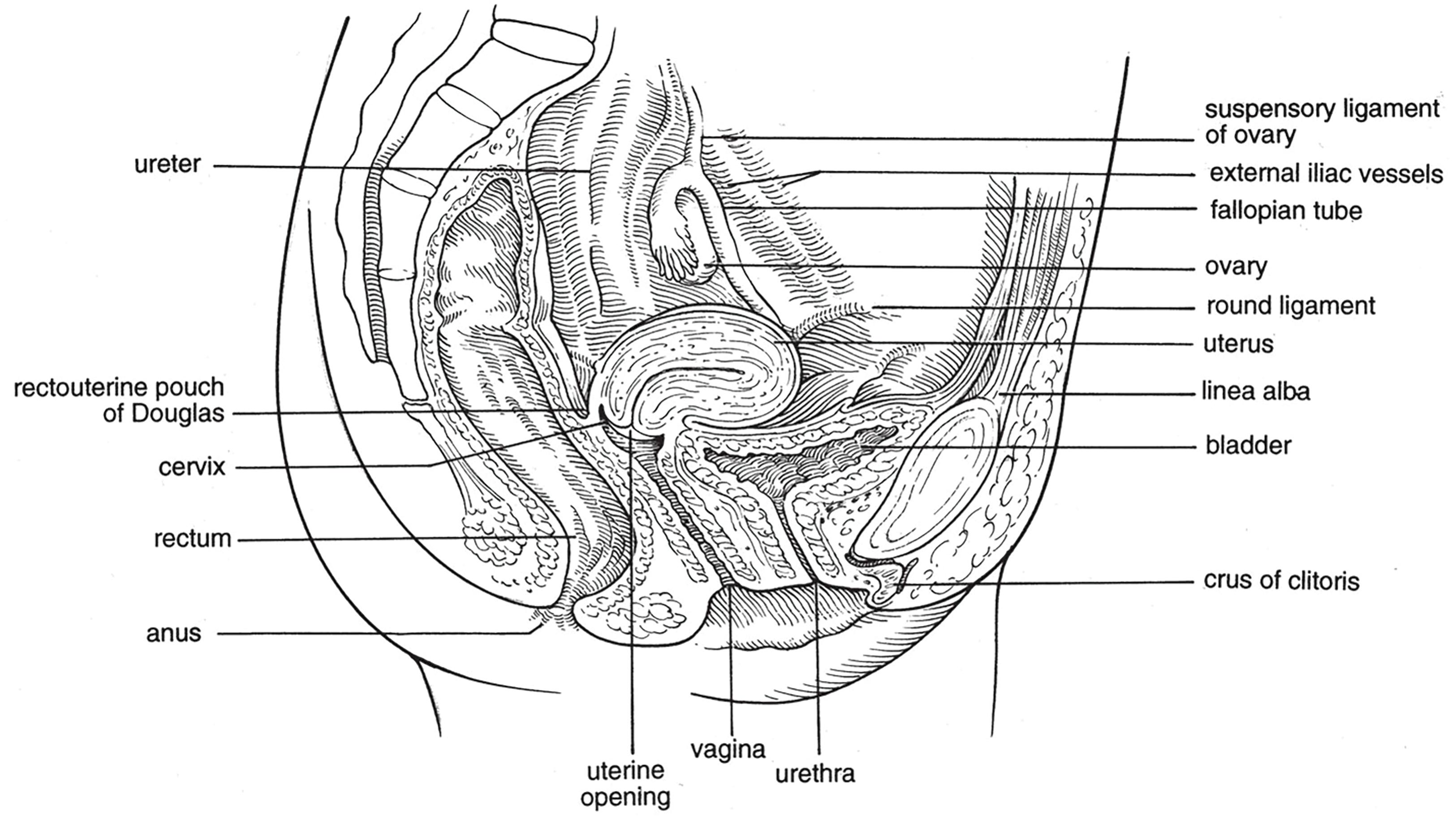
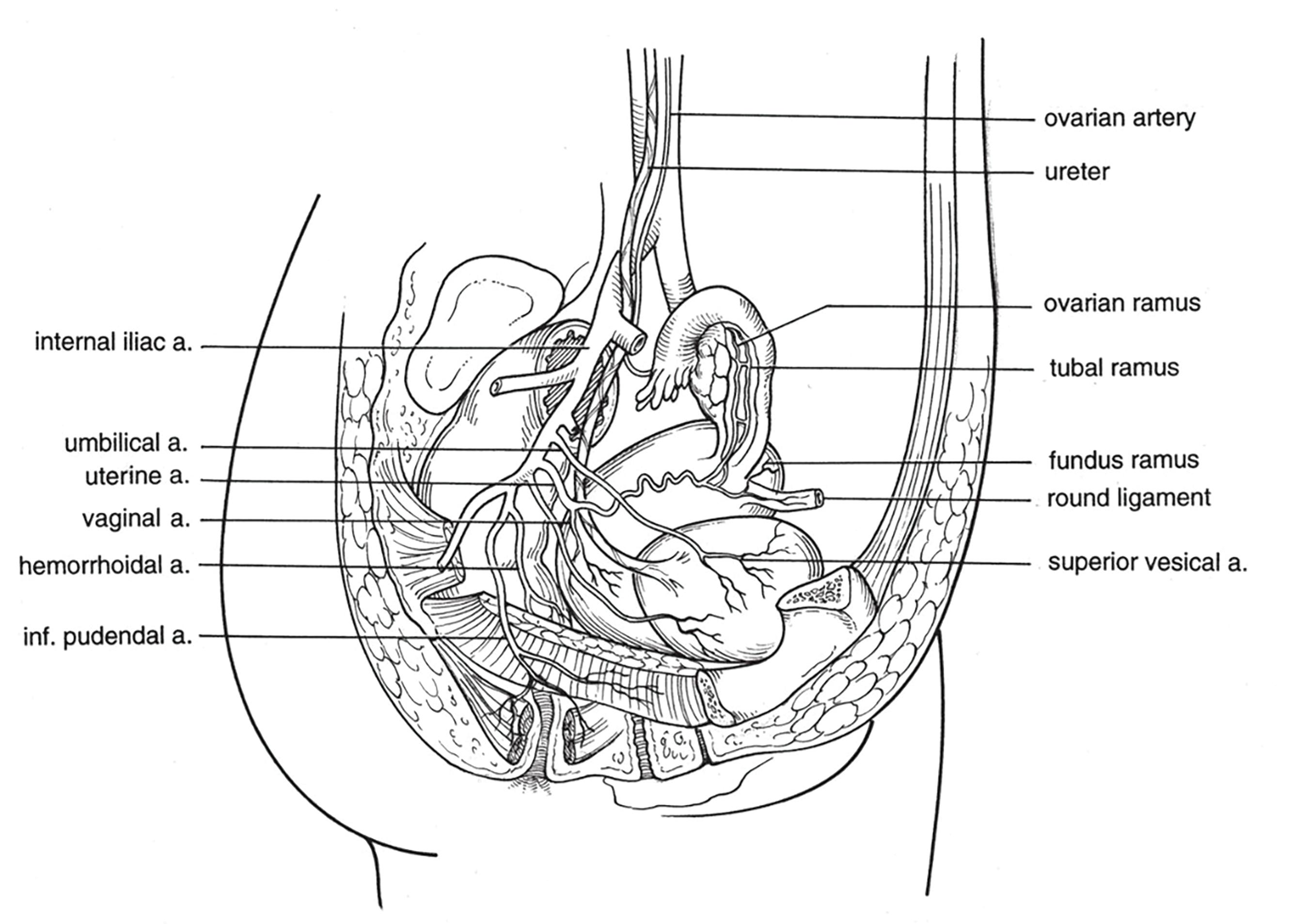
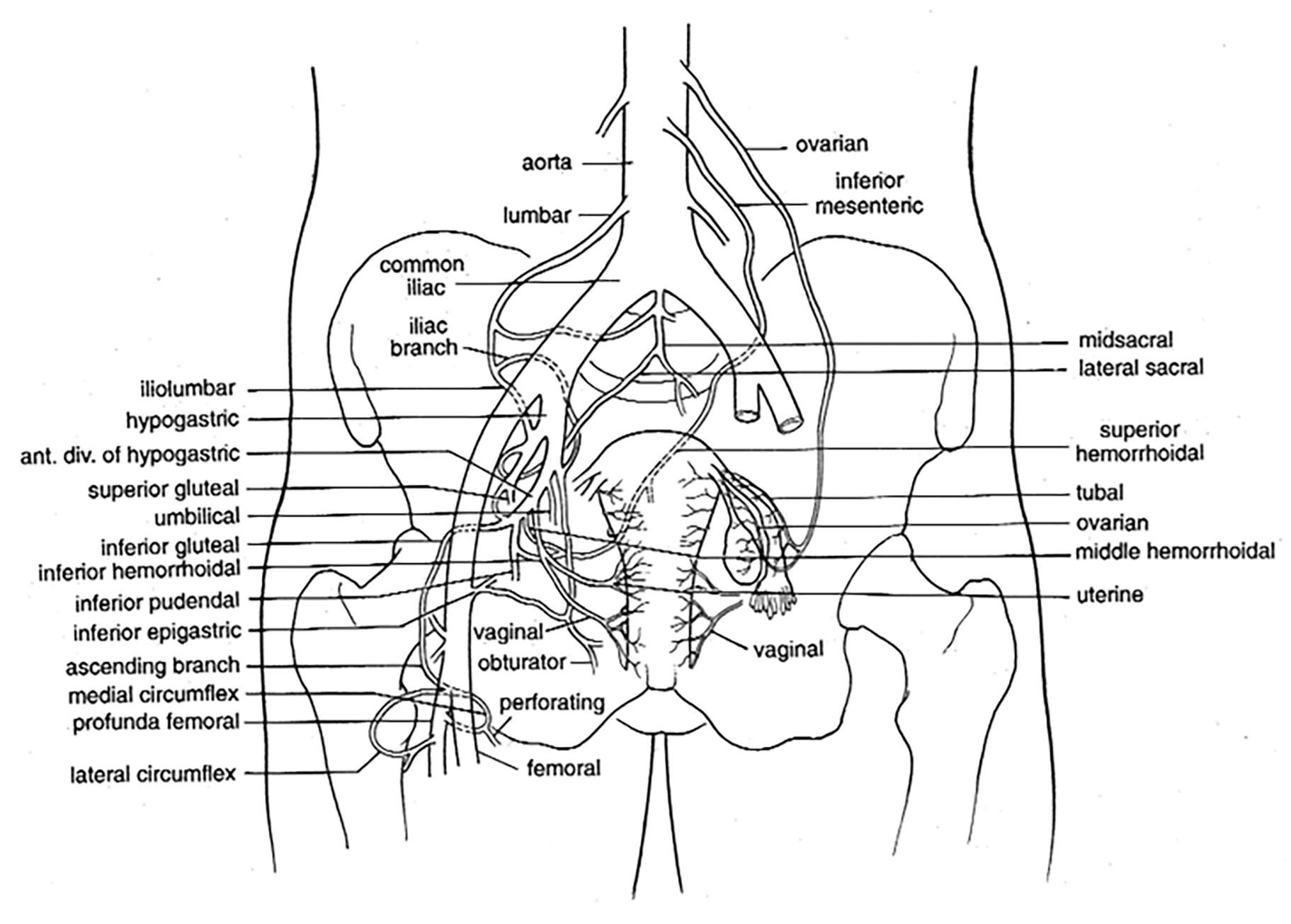
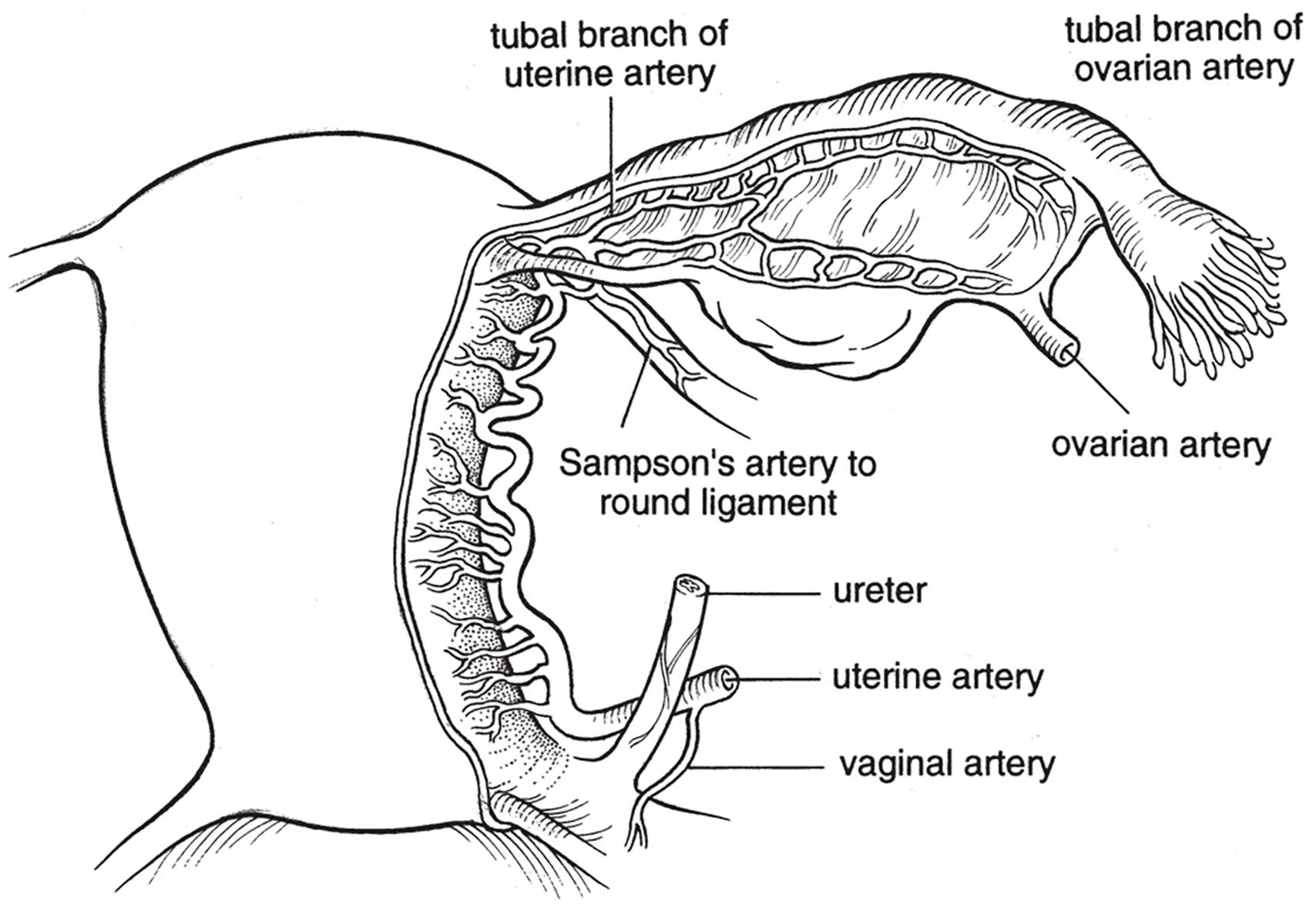
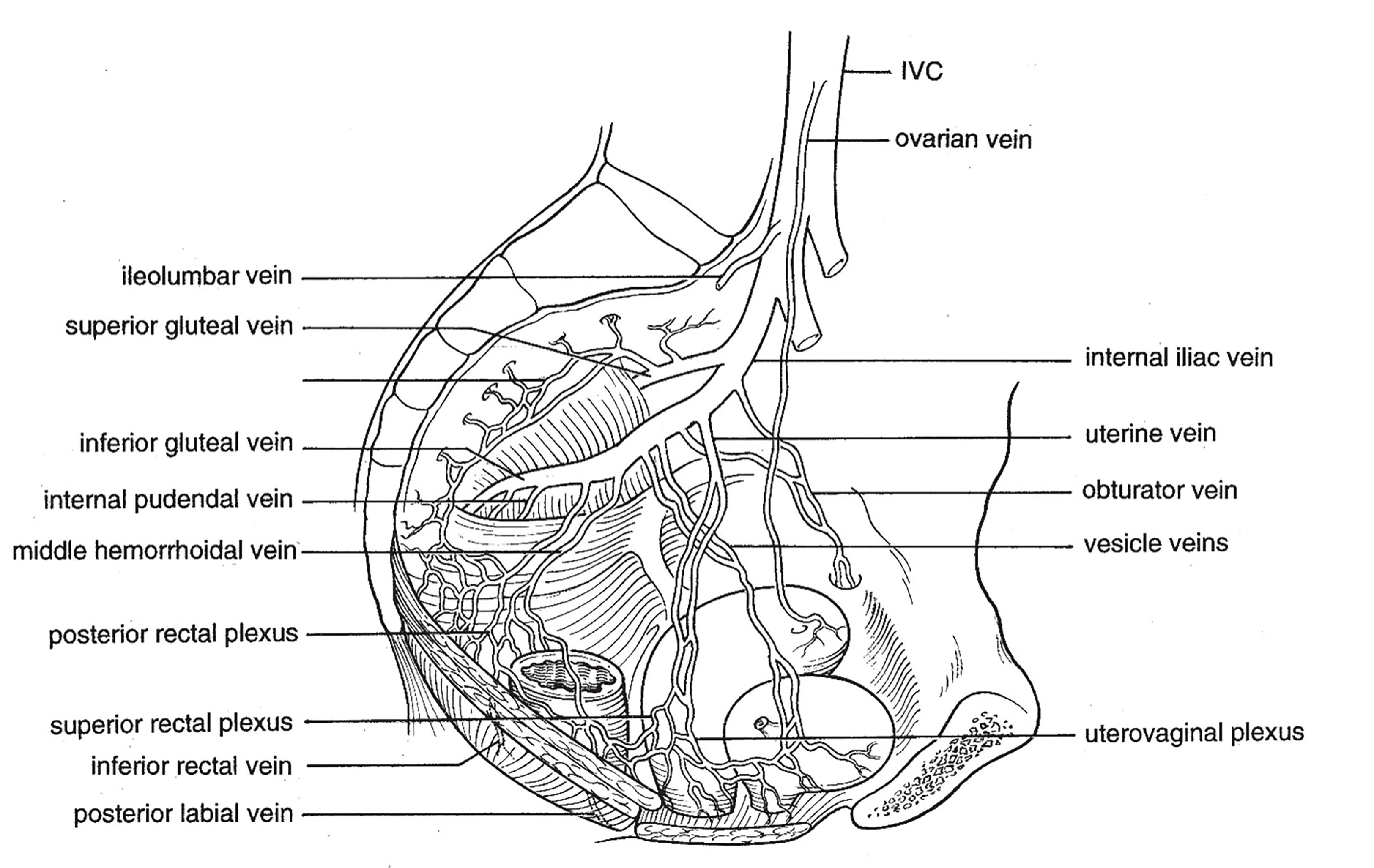
The exact incidence of injuries to the female genitalia is not clear. Most information on the subject is based on isolated case reports or small case series. Vaginal lacerations complicate approximately 3.5% of pelvic fractures in female patients. Associated urethral and bladder injuries are also common.
Become a Clinical Tree membership for Full access and enjoy Unlimited articles
If you are a member. Log in here